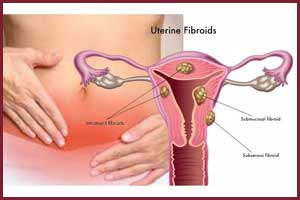- Home
- Editorial
- News
- Practice Guidelines
- Anesthesiology Guidelines
- Cancer Guidelines
- Cardiac Sciences Guidelines
- Critical Care Guidelines
- Dentistry Guidelines
- Dermatology Guidelines
- Diabetes and Endo Guidelines
- Diagnostics Guidelines
- ENT Guidelines
- Featured Practice Guidelines
- Gastroenterology Guidelines
- Geriatrics Guidelines
- Medicine Guidelines
- Nephrology Guidelines
- Neurosciences Guidelines
- Obs and Gynae Guidelines
- Ophthalmology Guidelines
- Orthopaedics Guidelines
- Paediatrics Guidelines
- Psychiatry Guidelines
- Pulmonology Guidelines
- Radiology Guidelines
- Surgery Guidelines
- Urology Guidelines
Relugolix effectively controls heavy bleeding associated with uterine fibroids

Relugolix is noninferior to leuprorelin for the treatment of heavy and prolonged uterine bleeding associated with uterine fibroids (leiomyoma).
JAPAN: Uterine fibroids (leiomyoma) is a noncancerous tumor that occurs in the muscle cells of the uterus. This can result in excessive and prolonged uterine bleeding at irregular or frequent intervals -- Menometrorrhagia. Uterine fibroids treatment ranges from monitoring the fibroids or administering medications to relieve the symptoms, to more invasive approaches, such as myomectomy and hysterectomy. Longstanding menometrorrhagia results in anemia which lowers a woman's physical endurance and significantly impacts the quality of life.
Medications include the treatments that suppress steroid hormone levels, such as gonadotropin-releasing hormone (GnRH) agonists, have been shown to be effective in heavy menstrual bleeding. GnRH antagonists also suppress estradiol levels but through different mechanisms.
A recent study published in the journal Obstetrics & Gynecology has found that once-daily treatment with relugolix (oral GnRH antagonist) is noninferior to monthly leuprorelin (injectable GnRH agonist) for the treatment of heavy menstrual bleeding in women with uterine leiomyomas. Also, relugolix had a more rapid effect on menstrual bleeding and was generally well tolerated.
Kazuaki Enya, Takeda Pharmaceutical Company Limited, Japan, and colleagues conducted this double-dummy, double-blind, randomized, controlled trial to investigate the noninferiority of relugolix compared with leuprorelin acetate in reducing heavy menstrual bleeding associated with uterine leiomyomas.
The trial consisted of 281 reproductive-aged women with heavy menstrual bleeding (score > 120 on a pictorial blood loss assessment chart) related to fibroids. 139 of them received 40-mg oral relugolix tablets daily and 142 received r 1.88 or 3.75 mg of leuprorelin (depending on weight) for 24 weeks.
The primary endpoint was the proportion of patients with a total pictorial blood loss assessment chart score of less than 10 for weeks 6–12. Secondary endpoints included myoma and uterine volumes, and hemoglobin levels.
Also Read: New minimally invasive treatment as effective as surgery for uterine fibroids
Key findings of the study include:
- Demographic and baseline characteristics were well balanced; mean pictorial blood loss assessment chart score was 254.3 in the relugolix group and 263.7 in the leuprorelin group.
- The proportion of patients with total pictorial blood loss assessment chart score of less than 10 for weeks 6–12 was 82.2% in the relugolix group and 83.1% in the leuprorelin group, demonstrating noninferiority of relugolix compared with leuprorelin.
- Relugolix was associated with an earlier effect on menstrual bleeding than leuprorelin.
- By study end (weeks 18-24), significantly more women had a pictorial blood loss score < 10 in the leuprorelin group (94.7%) than the relugolix group (84.1%);
- Reductions in myoma and uterine volumes and increases in hemoglobin levels were comparable in the two groups.
- Upon discontinuation of the study drug, menstruation recurred sooner with relugolix (37 days) than with leuprorelin (65 days)
- Hemoglobin levels rose similarly and pain levels improved to the same degree in both treatment groups.
- Adverse events and bone mineral density loss were similar between relugolix and leuprorelin treatment groups.

Disclaimer: This site is primarily intended for healthcare professionals. Any content/information on this website does not replace the advice of medical and/or health professionals and should not be construed as medical/diagnostic advice/endorsement or prescription. Use of this site is subject to our terms of use, privacy policy, advertisement policy. © 2020 Minerva Medical Treatment Pvt Ltd